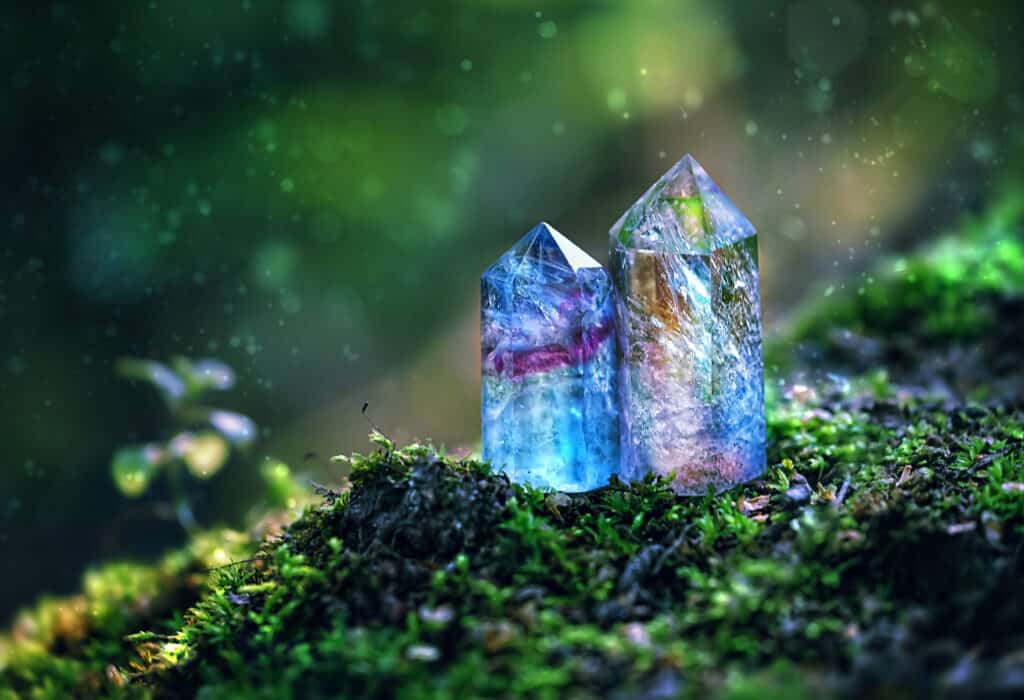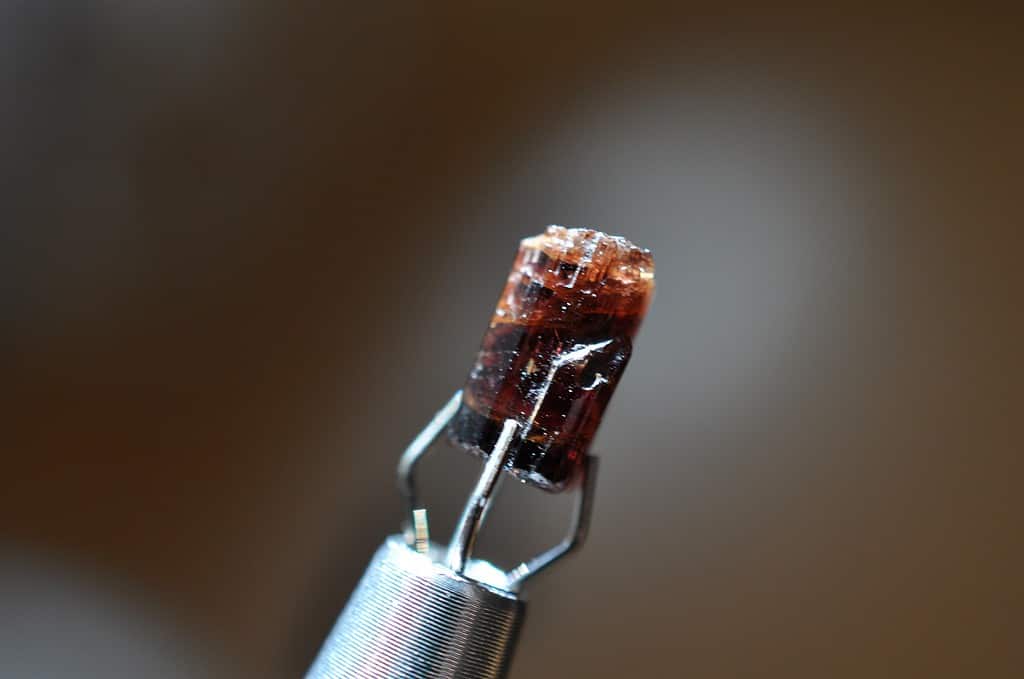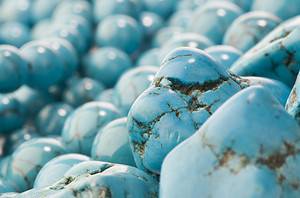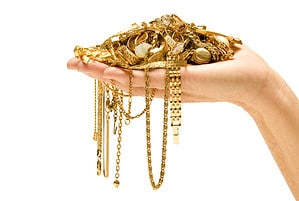The rarest gemstone in the world isn’t simple to figure out since people tend to care more about the most expensive gem in the world above the rarest. Talk regarding the blue diamond is all over the internet but the actual rarest gem is barely mentioned. Red and Blue diamonds are ultra-rare, but everyone is familiar with the diamond. Everyone is not familiar with some of the other rare gemstones and that’s where things really do get interesting. There’s a good chance you’ve never even heard of the rarest gemstone in the world. In this article, you are going to learn everything that is known about the world’s rarest gem and mineral but first, a quick lesson on the differences between gemstone, mineral, crystal, and stone.
What’s the Difference Between Gemstone, Mineral, Crystal, and Stone?

©ju_see/Shutterstock.com
Few people know the answer to this question, and it is important to understand when speaking about gemstones.
Stones or rocks
These can be several different minerals and organic substances, whereas minerals are only made up of one substance, with none being organic. Mining occurs in order to seek the minerals located inside of the stones or rocks. One example of a popular rock is Lapis Lazuli. The following are the types of rocks:
- Igneous rock forms by the solidification of magma released by volcanoes.
- Sedimentary rock forms by the settling of sediments such as sand, gravel, or clay.
- Metamorphic rock forms by the growth of minerals inside of the rock under pressure or temperature.
Crystals
These are minerals that are not part of an aggregated solid, like a rock or stone. Structured lattices are used to make crystals. The outcome is an inorganic, geometric structure. Crystals have an organized structure. The atoms are at very exact distances and at very exact angles from each other to form a crystal. Some examples of crystals are amethyst, rock crystal, citrine, and rubies.
Minerals
They are all crystals. Each mineral has its own chemical composition and crystal structure. It takes only one inorganic substance to make a mineral. Naturally occurring elements or compounds make a mineral. Numerous properties help in the creation of the mineral. Some of the main components are below:
- Color: the strength and vibrancy of color.
- Luster: the ability of the mineral to shine in the light. Metallic or nonmetallic.
- Hardness: the ease at which you can scratch a mineral.
- Density: the mass per unit volume of a mineral. Different minerals have slightly different densities due to differing chemical makeup.
- Streak color: the color left behind when a mineral scratches the surface of an unglazed porcelain plate.
- Solubility: whether or not a mineral dissolves in water.
- Magnetism: whether or not a mineral is magnetic.
- Optical Properties: some minerals have double refraction or fluorescence.
- Striations: stripes or parallel lines on a mineral seen under a microscope.
- Cleavage and Fracture plane: cleavage is where and how a mineral breaks along a flat surface, and fracture is where it breaks on an uneven surface.
- Opacity: this refers to how much light passes through a mineral.
- Crystal shape: the external form of the mineral’s crystals.
Gemstones
Gems always have a mineral origin and become gems or gemstones by grinding and polishing to enhance beauty. More than one mineral forms a gem, but only one substance forms minerals. More than 2,000 known minerals exist in the world, but only 200 are gemstone quality. Not all minerals have the necessary components to make a good gemstone. Grading gemstones occurs in the following categories:
- Beauty: Color, clarity, and how the light refracts.
- Sustainability: Hardness, how it splits, and how resistant it is to chemical agents.
- Rarity: how often does this stone occur in nature.
What is Kyawthuite?

This is not an actual photo of Kyawthuite, but it is similar in color, only slightly darker.
©Finesell/Shutterstock.com
There is only one small 1.61 karat sample of the intriguing kyawthuite in the world currently. The gemstone is a polished mineral from Myanmar. Sapphire hunters found the fairly brittle, transparent reddish-orange mineral in a streambed.
How Did Kyawthuite Form?
Myanmar is no stranger to minerals and gemstones. Many gemstones originated in Myanmar over the years, such as the world’s former rarest mineral and gemstone, painite. Geologists have explained that this phenomenon is thanks to the pressure and heat produced when India collided with Asia some 40 – 50 million years ago. The exact scientific makeup of kyawthuite is available for those of you who are able to follow it. Other than the info available here, there is very little else available about kyawthuite.
What Year was Kyawthuite Discovered?
International Mineralogical Association officially recognized the orange mineral as the rarest mineral in the world in 2015. It still remains the rarest mineral and gemstone in 2023.
Where Does Kyawthuite Come From?
The only known kyawthuite example is from the Mogok region of Myanmar, located in southeastern Asia. Among the silt and sediment of a stream and quite worn down by the water, the tiny gem was first seen. Very little information is available about the mineral since only one small example exists.
Myahmar has made a name for itself as one of the mineral and gemstone capitals of the world. Some of the gems from the area are Burmese rubies, amber, diamonds, jade, sapphires, spinel, garnet, topaz, amethyst, peridot, and moonstone. Mining for rubies and sapphires in Shan Plateau has taken place since precolonial times. Jade is located in the northern mountains.
Rarest Gemstones: The Runners Up

Painite, the second rarest mineral and gemstone in the world.
In the competition for the rarest gemstone in the world, there are a number of other rare minerals and Myanmar is a hotspot for them. After the rarest gemstone in the world, kyawthuite, comes the previous winner of the world’s rarest gem and mineral, Painite.
2. Painite
Karat Price: $2,000 – $8,000
Location: Myanmar
This mineral was the rarest mineral in the world for 50 years. This changed once a deposit of gem-quality painite was discovered in Myanmar in the early 2000s. When it was discovered in the 1950s, it was originally classified as a type of zircon. Later on it was discovered to be made of hydroxide of calcium and aluminum and was obviously not zircon after all. Painite is named after British mineralogist and gemologist Arthur C. D. Pain, who was the one who discovered it in the 1950s. It is still very rare and expensive.
3. Red Diamond
Karat Price: $2,000,000
Location: Argyle mine in Western Australia
By using extreme heat , nitrogen and pressure these rare diamonds were born. Much like the blue diamond, The discovery of the first red diamond was in Tanzania in 1954. Nitrogen is the cause of the depth of the red color in the gem.
4. Blue Diamond
Karat Price: $3,000,000
Location: Cullinan mine in South Africa
The blue diamond is the gemstone fetching the highest price in 2023. The blue of the diamond comes from boron impurities. The more boron impurities there are, the deeper the shade of blue the mineral becomes.
5. Alexandrite
Karat Price: $5,000 – $20,000
Location: Brazil, Sri Lanka, and Tanzania
The first alexandrite came from the Ural Mountains of Russia. The ruling monarch at the time, Tsar Alexander II, became the gemstone’s name. The gem looks green in natural light and purple or red in artificial light. The color changing occurs due to its optical and chemical properties.
6. Red Beryl
Karat Price: $10,000 – $20,000
Location: Utah, New Mexico, and Colorado in the United States
Red beryl was first discovered by Maynard Bixby in 1904 in the Thomas Mountain range of Utah. This rare gem was first discovered inside of rhyolites, pegmatites, and even certain forms of lava that formed in the Late Cretaceous and Early Tertiary periods. Its brilliant red color, is from traces of manganese in the mineral.
Conclusion

©osinko/Shutterstock.com
It is unlikely that another gemstone will replace the number one rarest gem in the world, kyawthuite for some time. Since there are only 1.61 karats of kyawthuite, its safe to say it doesn’t get much rarer than that. It’s always possible that someone will discover another beautiful mineral and once it is inspected, graded and polished, it will become the next rarest gem one day soon. It will be hard to top the breathtaking beauty of the current contenders.
The photo featured at the top of this post is © Mineral Enthusiast / CC BY-SA 4.0 – License / Original
Thank you for reading! Have some feedback for us? Contact the AZ Animals editorial team.







